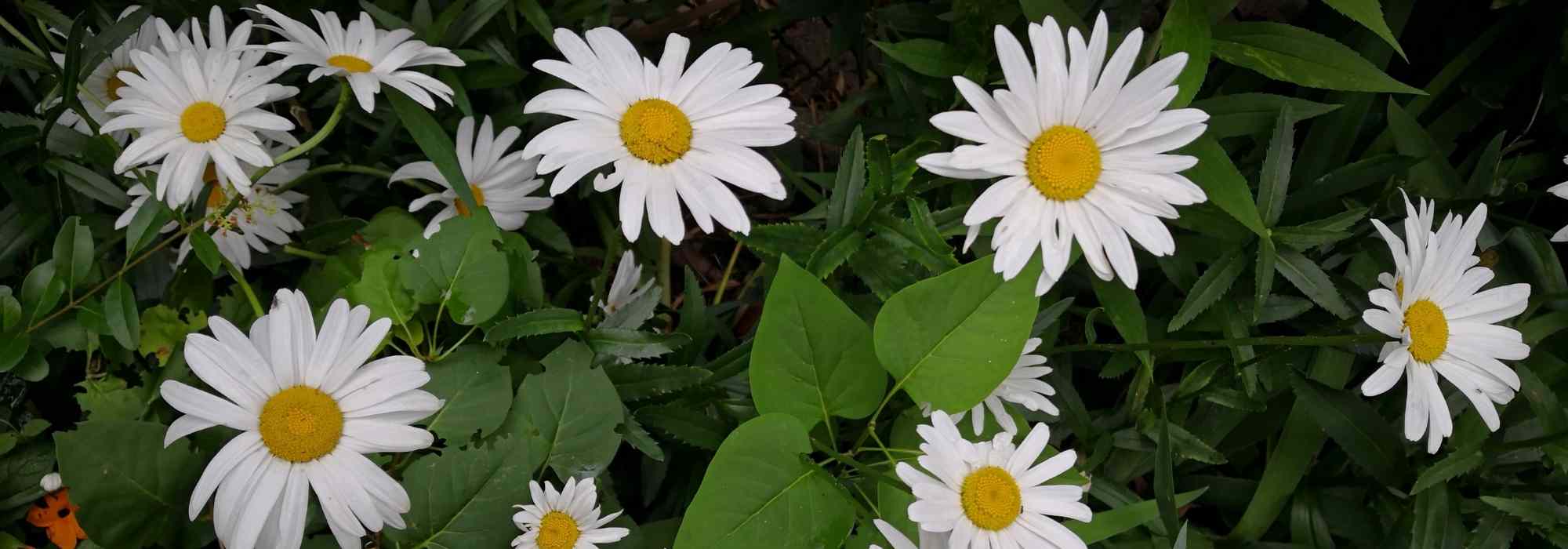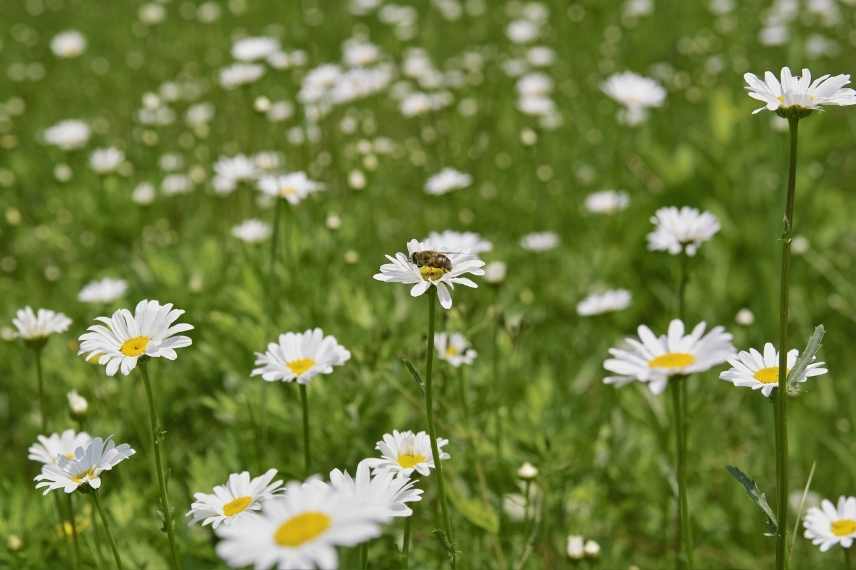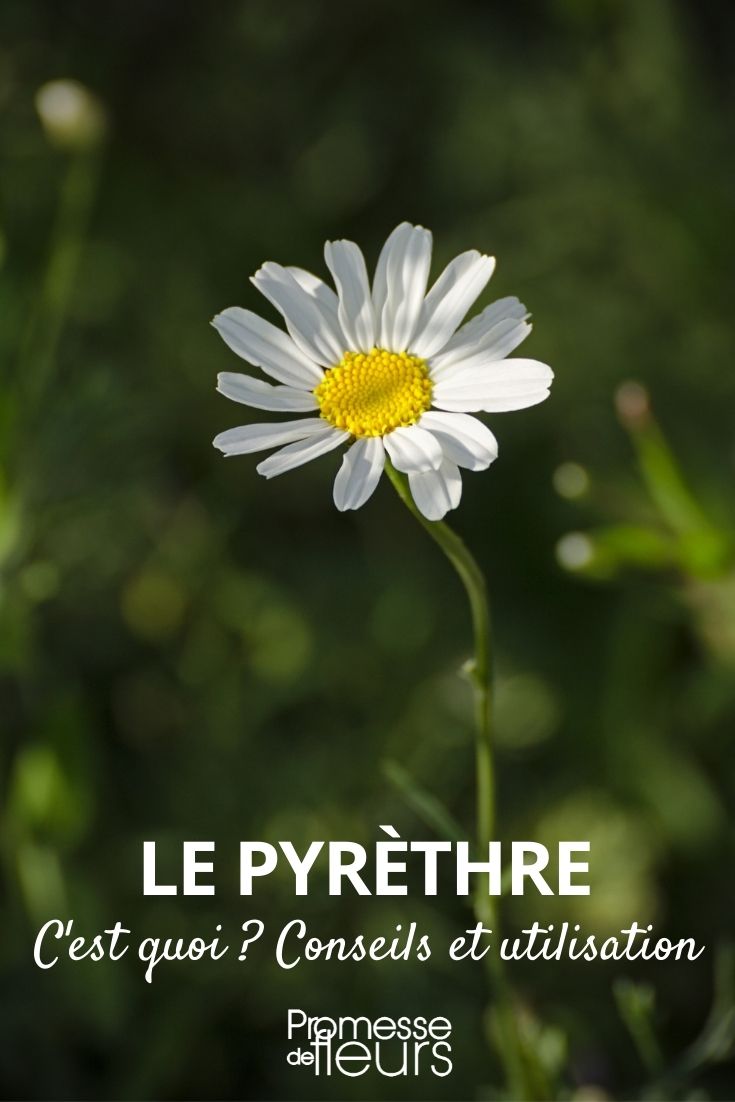
Using pyrethrum in the garden
Know, prepare and use it correctly
Contents
Pyrethrum is an insecticidal substance of plant origin obtained from Dalmatian pyrethrum (Tanacetum cinerariifolium) used for several decades against various crop pests. Although its active compounds are plant-derived, this product remains highly aggressive at high doses towards all insects and cold-blooded garden animals (including beneficial garden organisms!). Discover our advice on how to use it in an environmentally responsible way.

Tanacetum cinerariifolium
Where does pyrethrum come from?
This molecule, highly effective against insects, comes from a plant (Tanacetum cinerariifolium) native to south-east Europe and belonging to family Asteraceae (daisies, dandelions, knapweeds, common daisies, rudbeckias, etc). It is a plant that closely resembles our oxeye daisy (Leucanthemum vulgare) but grows only above 1,500 metres and has very deeply divided leaves.
Dalmatian pyrethrum (Tanacetum cinerariifolium) belongs to same genus as our common tansy (Tanacetum vulgare), very common along roadsides and also used as repellent and insecticidal in garden.
This plant is now present on almost every continent because of its lethal use against many pests. Several African countries even cultivate this plant for trade in this natural insecticidal product.

Tanacetum cinerariifolium and Tanacetum vulgare
Read also
Nettle manure: how to make it?When and against whom should it be used?
Active molecules contained in and extracted from this plant have a neurotoxic effect on all insects and cold-blooded animals.At low doses, this product will mostly act as a repellentagainst them, notably female mosquitoes responsible for many diseases in the tropics.
In the garden, this product will be a great help in combating many unwanted hosts in our vegetable plots.
For example:
- Aphids that suck sap from our broad beans, roses, cabbages, tomatoes, beetroot…
- Flea beetles that attack leaves of all species of family Brassicaceae
- Mites (red spider mites) that thrive on indoor or outdoor plants during dry periods.
- Various caterpillars such as cabbage white, larvae of leek fly and Colorado potato beetle will be removed from your plots.
- At home, cockroaches, bed bugs (or cat fleas)
- Mosquitoes (both larvae and adults will be destroyed by these molecules).
This list is, of course, not exhaustive, as this product could potentially eradicate any insect (whether useful to gardeners or not).
What precautions should be observed?
Beware of “organic” or “natural” labelling on various products! Although this insecticidal product comes from a plant rather than synthetic chemistry, its action can be highly harmful to all small wildlife in the garden (mainly insects, fish, amphibians, lizards, …) that are cold-blooded.
It should therefore be used sparingly and only as a last resort or you risk harming the entire ecosystem of your corner of paradise.
As mentioned above, even beneficial insects can be killed indiscriminately by this “natural” product.
As usual, it’s the dose that makes the poison. Therefore read labels carefully before using this product sold in powder or liquid form (Be sure to check packaging to confirm your pyrethrum is genuinely natural and not synthetically produced!).
This molecule should always be applied in the evening and without direct exposure to light, which destroys the product’s active chemical compounds. It should be noted that these molecules biodegrade very quickly, unlike synthetic chemical molecules which can sometimes persist for decades in soils and poison populations as well as ecosystems for whole generations (Agent Orange, DDT, chlordecone, …).
As usual, we advise using this product preventively (as a repellent) rather than lethally to avoid turning your garden into a biological desert…

Pyrethrum should be used sparingly, especially with regard to the small cold-blooded wildlife of the garden
Read also
How to make tomato leaf spray?Good to know
If you do not wish to use that kind of product, why not grow this plant directly in your vegetable plot as a repellent?
Tansy and Dalmatian pyrethrum emit a strong, highly deterrent odour to most vegetable garden pests.
This daisy-like plant is also very decorative and undemanding as regards soil quality. It actually prefers poor, stony, montane-style soil, which will make its flowers less abundant but more toxic if you use them in your curative preparations in the garden.

- Subscribe!
- Contents
































Comments